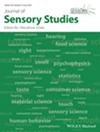This research investigated cross-cultural differences in acceptance of a plant-based cocoa-flavored ice cream iso-sweetened with different natural sweeteners among Danish and Brazilian consumers. Ideal sweetness, equi-sweetness, quantitative descriptive analysis (QDA), and consumer affective tests were carried out. Results were analyzed through ANOVA and Tukey's means test (p ≤ .05). For consumer tests, Danish consumers (n = 120) and Brazilian consumers (n = 120) evaluated seven samples of a plant-based cocoa-flavored ice cream iso-sweetened with sucrose, blends of sucrose and xylitol (25%, 50%, and 75%, respectively), stevia 95% rebaudioside A, stevia 60% rebaudioside A, and a blend of stevia and xylitol (50%). No significant difference in overall liking was found between the blends of sucrose and xylitol. Samples sweetened with stevia rebaudioside A 95% and 60%, and a blend of stevia rebaudioside A 95% with xylitol 50% were rejected by Danish consumers, whereas Brazilian consumers liked them a little better (5.08, 4.63, and 4.92, respectively), even though there was no significant difference among them (p > .05).
This study showed that it is possible to reduce sugar content and increase liking in this plant-based ice cream matrix by replacing sucrose with xylitol. This emphasizes that the replacement will work in some places, but in others, it will not make a difference in acceptance; thus, it is a win for the food industry. The results obtained from specific groups require further studies on applying them to different consumers. The differences and similarities in acceptance between Danish and Brazilian consumers for natural sweeteners-sweetened plant-based ice cream emphasize the importance of performing a consumer acceptance study with consumers to whom the products under study are intended.


